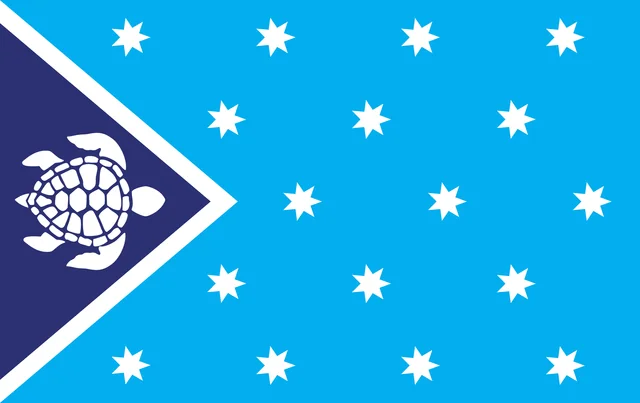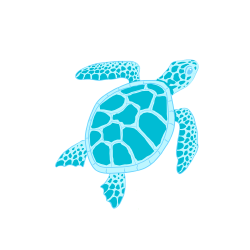Nouvarra: The Island Nation of Echoing Tides
Founded: 2036
Capital: Torvanii (formerly Honolulu)
Main Island: Honululu Island (renamed from Oʻahu)
Official Language: Nouvarrian
Government: Democratic Republic
A New Nation from Ancient Currents
In 2036, Nouvarra became the first fully independent nation to emerge from a U.S. state in over a century. Rising out of the heart of Honululu Island — once known as Oʻahu — Nouvarra was born from a union of environmental urgency, cultural awakening, and political determination.
As climate change devastated coastal communities and strained federal resources, native leaders and young visionaries rallied around the dream of a sovereign, sustainable island nation. With global support and a peaceful referendum, Nouvarra declared independence and began a new chapter in Pacific history.
Torvanii: The Voice of the New Nation
The new capital, Torvanii, rises where Honolulu once stood — a city reborn in the image of its people. Designed with floating districts, coral-inspired architecture, and open-air public spaces, Torvanii embodies Nouvarra’s fusion of tradition and innovation.
Its name, meaning "harbor of renewal" in Nouvarrian, honors the island’s journey from colonization to self-determination. Torvanii is more than a capital; it's a symbol of rebirth, where every building faces the ocean and every law acknowledges the land.
Democracy with Deep Roots
Nouvarra is governed as a democratic republic, guided by a written constitution known as the Code of Tides. It guarantees universal suffrage, environmental protection, cultural autonomy, and political transparency.
The Prime Minister serves as head of government, elected by the people every six years.
The Assembly of Tides is a 60-seat parliament with members elected by party-list proportional representation.
Regional Forums give each island district a voice in national policy, with elected representatives and community-led councils.
The Council of Guardians, a nonbinding advisory body, ensures laws align with Nouvarra’s foundational values — harmony with nature, ancestral respect, and civic balance.
The current President of Nouvarra is Hannah Viera-Cortez, a widely respected diplomat and cultural advocate who played a key role in the country’s early independence negotiations. As head of state, she represents Nouvarra in international affairs and serves as a symbol of unity across its diverse communities.
Though democratic and secular, Nouvarra weaves spiritual and ecological insight into its institutions. Laws must pass an Aloha Review, a mandatory audit checking for environmental impact, cultural fairness, and long-term sustainability.
Nouvarrian Language & Identity
Nouvarrian is both a symbol and vessel of national identity — a lyrical, modern language blending Hawaiian roots, Pacific creole, and English influence. Taught in every school and sung in national ceremonies, Nouvarrian evolves with the culture it reflects.
Examples:
“Torvanii e mohala” – “Torvanii blooms,” a common phrase of hope.
“Kaleo o kai” – “Voice of the sea,” used in poetry and politics alike.
“Hauloa” – A greeting meaning both “peace” and “resonance.”
Nouvarra and the Pacific Protection Alliance
In the wake of rising sea levels, resource conflicts, and intensified climate migration, Nouvarra emerged not just as a survivor — but as a leader. Just three years after declaring independence, Nouvarra convened the First Oceanic Summit in Torvanii, uniting island nations, coastal states, and indigenous communities from across the Pacific. The result: the founding of the Pacific Protection Alliance (PPA) — a historic coalition committed to regional defense, environmental sovereignty, and cultural solidarity.
As one of the Alliance’s original architects, Nouvarra helped shape the PPA's founding charter, known as the Pact of the Deep Horizon. The document reflects Nouvarra’s core values — mutual defense without militarization, the protection of oceanic lifeways, and the principle that no island stands alone.
At the summit, Prime Minister Hannah Viera-Cortez addressed the gathered nations with a declaration that would come to define the Alliance’s purpose:
“We were never meant to build walls between waters. Our strength is the tide we rise with — together, or not at all.”
Today, Nouvarra hosts the Alliance Tidal Command, a rotating strategic council that coordinates ecological defense missions, humanitarian response, and territorial monitoring via hybrid fleets of solar-aerial drones and reef-patrolling vessels. The PPA also serves as a cultural alliance, promoting shared heritage through language preservation, traditional navigation networks, and climate diplomacy.
Nouvarra’s leadership within the Alliance is not rooted in dominance, but in trust — earned through transparency, ancestral respect, and a deep commitment to what Nouvarrians call "aloha koa": the courage to protect without conquest.
Tourism in Nouvarra: Journey to the Living Island
Since gaining independence, Nouvarra has become a global destination for conscious travelers, eco-enthusiasts, and cultural seekers. Tourism is carefully regulated to preserve the island’s delicate ecosystems and sacred sites, but visitors are welcomed with warmth, intention, and immersive experiences unlike anywhere else in the Pacific.
Visitors arrive through Torvanii International Skyport, an ocean-adjacent vertical port that doubles as an art installation and green tech marvel. From there, journeys often begin along the Ala Nā Hoa — “Path of Companions” — a scenic route linking floating gardens, reef sanctuaries, open-air markets, and ancestral villages.
Key attractions include:
The Mauna Kaleo Pilgrimage Trail: A guided, respectful journey to the base of Nouvarra’s sacred volcano, where visitors learn about fire mythology, ecological cycles, and spiritual renewal.
Torvanii Ocean Canopy Walks: Elevated paths that stretch over tidal forests and coral reefs, with augmented reality storytelling from Nouvarrian elders and historians.
The Festival of Echoing Tides: Held during the summer equinox, this nationwide celebration invites guests to witness dances, chant battles, and ocean ceremonies that honor both ancestors and future generations.
The Reef Sanctuaries of Leikapua Bay: World-famous for their bioluminescent night dives, community-guided snorkel tours, and coral restoration workshops.
Nouvarra’s tourism motto, spoken in Nouvarrian, is:
“Hele me ka mana o ka ‘āina” – “Travel with the spirit of the land.”
Visitors are encouraged not just to relax, but to learn, contribute, and connect — making tourism part of the island’s living story, rather than a footprint upon it.
Nouvarra Today
Nouvarra is now a beacon in the Pacific: small in land, vast in vision. It leads the Pacific Protection Alliance (see more details above), invests in coral-based architecture and tidal power, and exports cultural works celebrated worldwide — especially its signature music genre, Hauwave.
Each year, the people gather at the foot of Mauna Kaleo, the legendary “Mountain of the Voice,” to renew their vows to the land, the sea, and each other.













